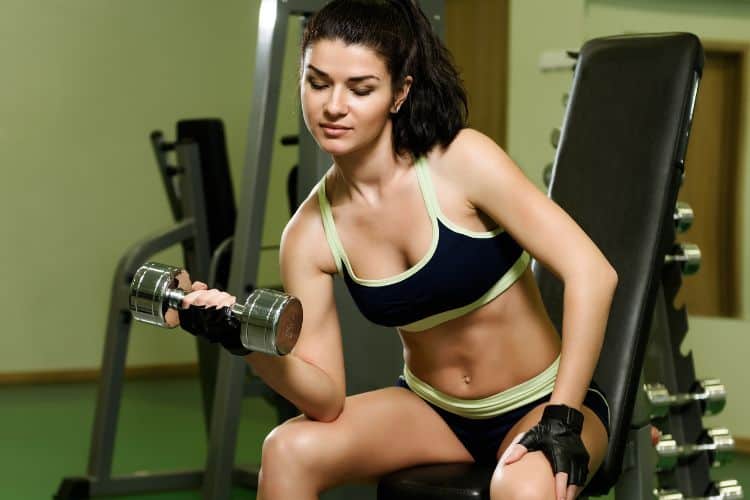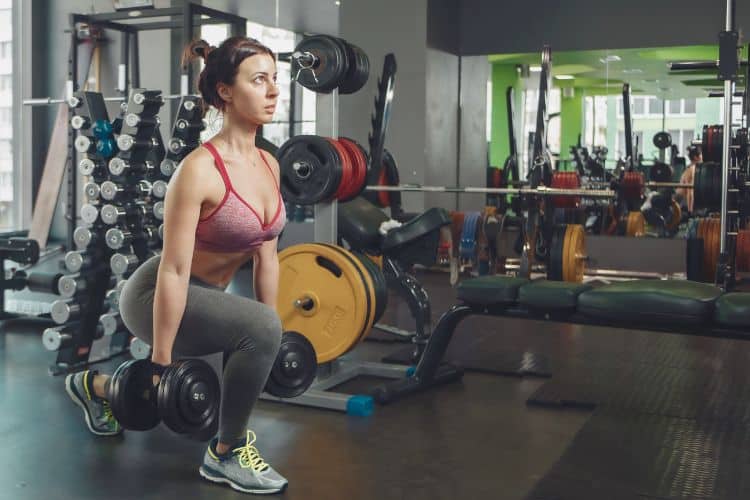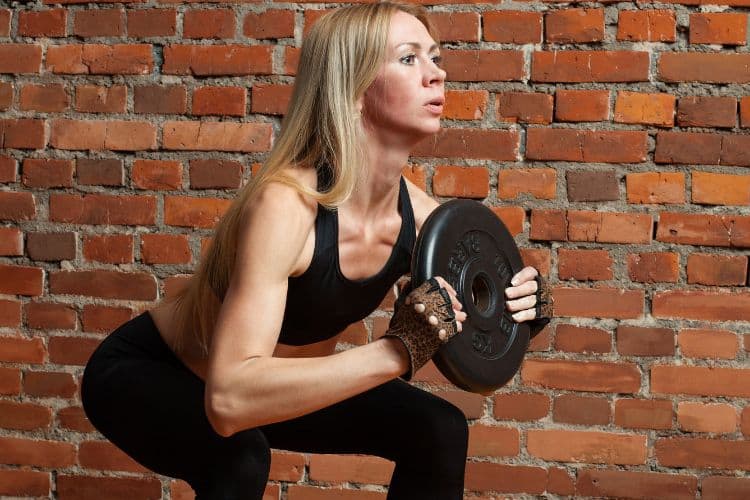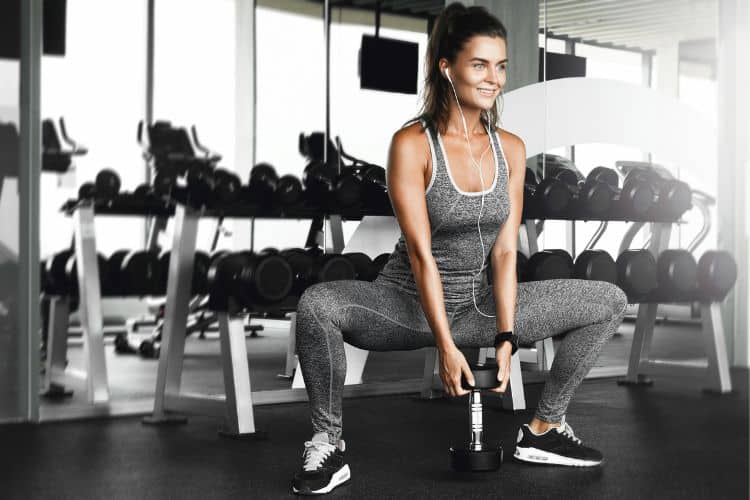Sign up for workout ideas, training advice, reviews of the latest gear and more.






If you’re short on time but want maximum results, a 35-minute dumbbell HIIT workout is the perfect way to torch fat, build lean muscle, and boost your metabolism. High-Intensity Interval Training (HIIT) combined with resistance from dumbbells makes every second count by engaging multiple muscle groups while elevating your heart rate. Whether you’re working out at home or in the gym, this fast-paced routine will deliver impressive results with minimal equipment.
In this guide, we’ll break down the benefits of dumbbell HIIT, a structured 35-minute workout routine, tips for success, and frequently asked questions to help you get started. Let’s jump into this fat-burning, muscle-sculpting challenge.
A dumbbell HIIT workout combines high-intensity cardio intervals with strength-based exercises using dumbbells. Typically, exercises are performed in short, intense bursts followed by brief periods of rest. The addition of dumbbells increases resistance, helping to build strength while maintaining the cardiovascular intensity that HIIT is known for.
This dual approach elevates calorie burn both during and after your workout thanks to EPOC (Excess Post-Exercise Oxygen Consumption), also known as the “afterburn effect.”
A 35-minute session can burn up to 350–500 calories depending on your weight and intensity. The combination of strength and cardio accelerates fat loss more efficiently than steady-state cardio.
Dumbbells allow you to add resistance to traditional bodyweight HIIT, promoting muscle growth and definition, particularly in the arms, shoulders, glutes, and core.
HIIT workouts elevate your metabolism for hours after the workout, helping you burn fat throughout the day—even while resting.
Short bursts of high effort followed by recovery periods condition your heart and lungs, boosting endurance and reducing cardiovascular risk factors.
You only need a pair of dumbbells and 35 minutes to complete a full-body workout. Perfect for busy professionals, stay-at-home parents, or anyone with a packed schedule.
This HIIT workout structure includes 5 circuits. Each circuit has 2 strength exercises + 1 cardio move, performed in 40 seconds on, 20 seconds rest, for 3 rounds. Rest 1 minute between circuits.
Before you start, spend 5 minutes warming up to activate muscles and prevent injury:
Hold one dumbbell at chest level. Lower into a squat and return to standing. Works quads, hamstrings, and glutes.
Hold dumbbells at your sides, step back into a lunge, then return to standing. Alternate legs.
Explode up from a squat position. Land softly and repeat. Builds explosive strength and elevates heart rate.
Repeat this circuit 3 times. Then rest 1 minute.
Press dumbbells overhead from shoulder height. Focus on control. Works shoulders and triceps.
With a flat back, hinge at the hips and row dumbbells toward your torso. Strengthens back and biceps.
In a plank position, drive knees toward chest rapidly. Great for core and cardio.
Repeat this circuit 3 times. Then rest 1 minute.
Seated, hold one dumbbell with both hands and twist from side to side. Targets obliques.
Perform a sit-up while holding a dumbbell, pressing it overhead at the top of the movement.
Use a jump rope or perform high knees in place. This boosts cardio and coordination.
Repeat this circuit 3 times. Then rest 1 minute.
A squat followed immediately by an overhead press. A powerhouse move that targets nearly every muscle group.
In a plank position, row each dumbbell alternately. Stabilizes your core while working your back.
The ultimate calorie burner. Perform a push-up, jump in, and explode upward.
Repeat this circuit 3 times. Then rest 1 minute.
Lie on your back with legs raised. Reach dumbbells toward your toes.
Stand with one dumbbell and bend side to side. Switch hands halfway.
Lateral jumps with one foot landing at a time. Great for agility and glute activation.
Repeat this circuit 3 times.
Don’t skip the cool down. Spend 5 minutes stretching:
Use dumbbells that challenge you without compromising form. Too light, and you won’t get the full benefit; too heavy, and your form might suffer.
It’s better to perform fewer reps with proper technique than more with bad form. Quality over quantity!
Prepare your workout space and know the exercises in advance to minimize downtime between movements.
If a movement is too challenging, scale it back. For example, perform push-ups on knees or reduce dumbbell weight.
Even in just 35 minutes, you’ll sweat a lot. Keep water nearby and sip as needed.
Yes! Beginners can absolutely start with this format by choosing lighter weights and modifying high-impact movements. Always prioritize proper form and listen to your body.
2–4 times per week is ideal. Allow at least one day of rest or active recovery between sessions to avoid overtraining.
Yes! The combination of strength and cardio in HIIT creates a calorie deficit and boosts metabolism—key elements in fat loss.
Start with 5–15 lbs depending on your strength level. Upper body moves typically require lighter weights, while lower body exercises can handle heavier loads.
Nope. This workout is designed to be minimal-equipment. Just a pair of dumbbells, space to move, and motivation are enough!
| Day | Workout Focus |
|---|---|
| Monday | Full-Body Dumbbell HIIT |
| Tuesday | Rest or Active Recovery |
| Wednesday | Lower Body HIIT |
| Thursday | Upper Body + Core HIIT |
| Friday | Full-Body Dumbbell HIIT |
| Saturday | Cardio & Core Dumbbell HIIT |
| Sunday | Rest or Yoga/Stretching |
A 35-minute dumbbell HIIT workout is one of the most effective ways to achieve your fitness goals, especially when time is limited. With the right mix of strength and cardio, you’ll torch fat, tone muscles, and improve your heart health—all from the comfort of your home or gym.
Consistency is key. Incorporate this routine 2–4 times weekly, and pair it with balanced nutrition, quality sleep, and hydration to maximize results.
Want more effective workouts?
Subscribe to our blog or follow us on Pinterest for new routines, challenges, and fitness tips!
Stay up to date on the latest women’s health, fitness and lifestyle trends and tips.